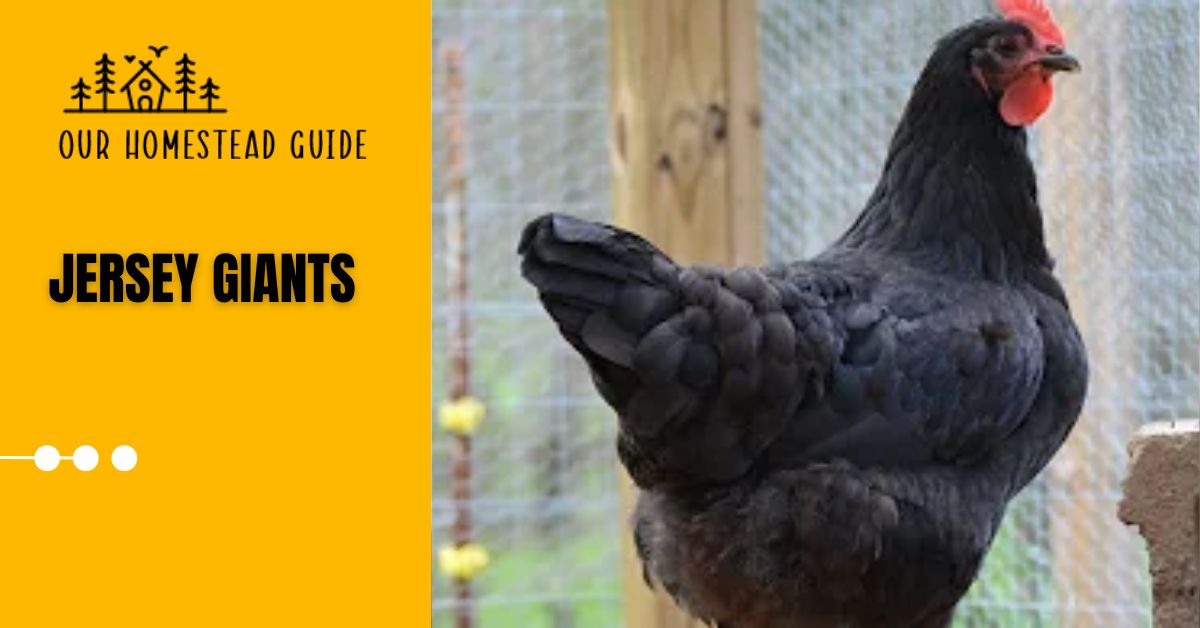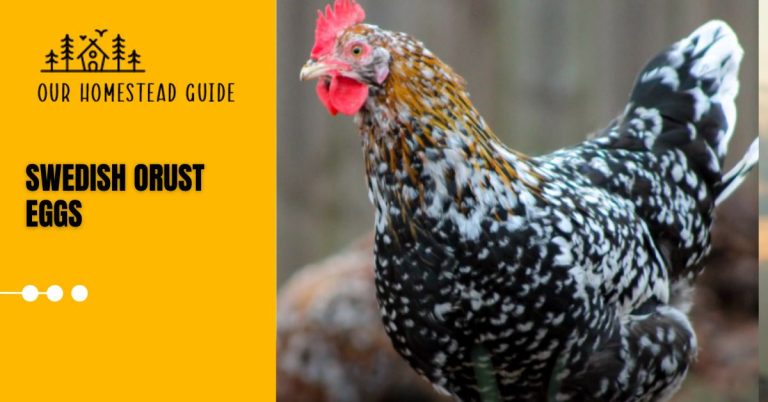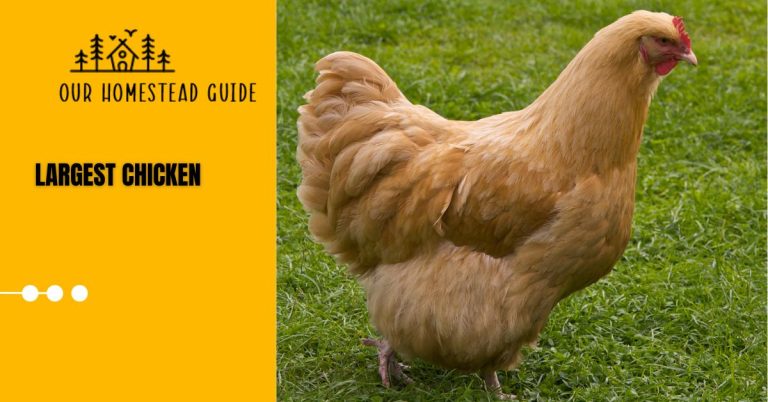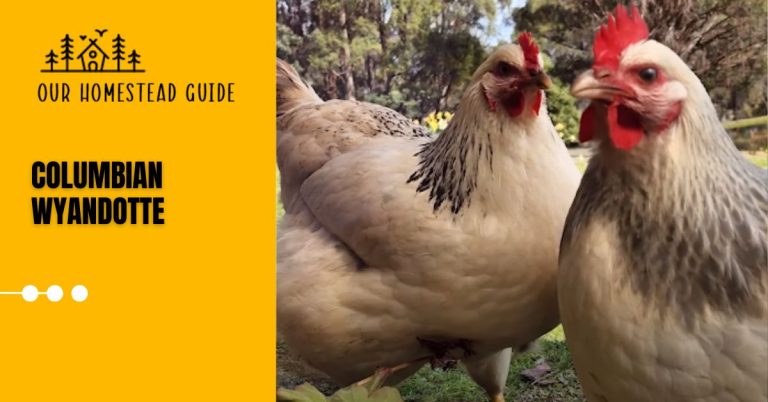Jersey Giant: Chicken Breeds Guide And More
The moniker “Jersey Giant” may conjure images of a monstrous chicken stomping through a community, causing havoc with its enormous, Godzilla-like feet. Despite being a giant breed of chicken, the Jersey Giant is fortunately not very big!
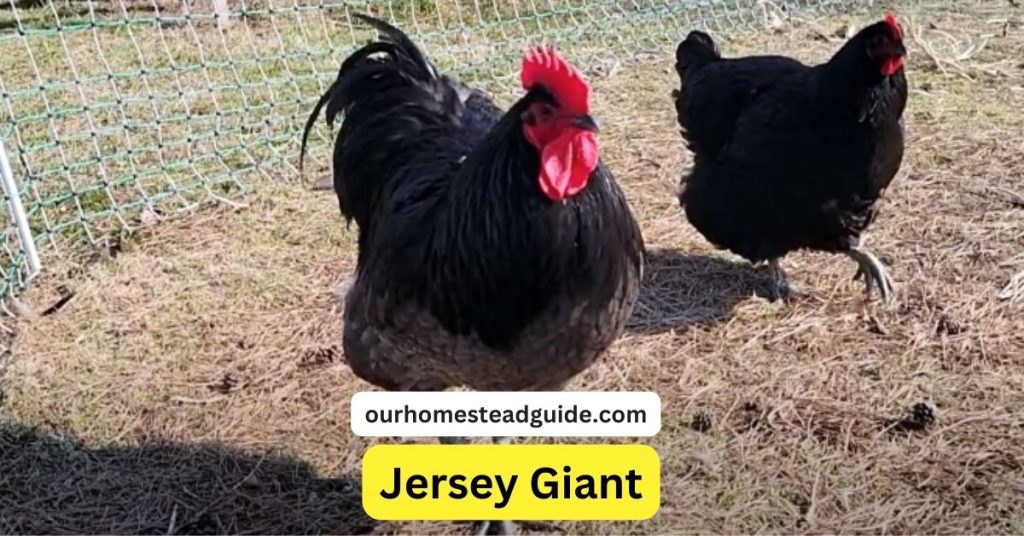
Jersey Giants are the largest purebred chicken breed in the United States. They are easy to raise and make good backyard chickens.
How to Jersey Giant?
Step 1: Source jersey giant chicks or hatching eggs
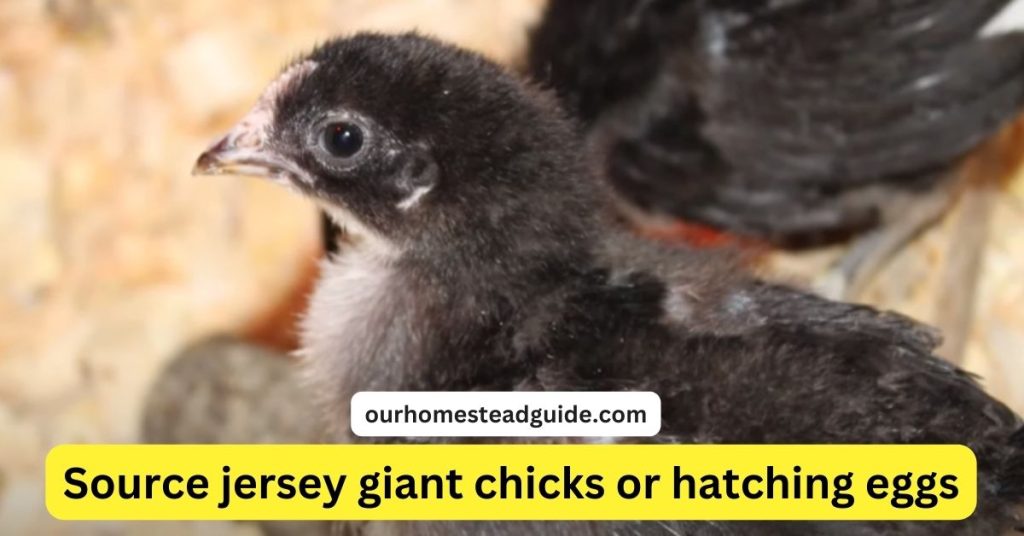
To buy jersey giant chicks or hatching eggs, get in touch with respectable breeders or hatcheries. Make sure the eggs or chicks are from wholesome, well-cared-for birds.
Step 2: Prepare a suitable coop and run

Provide a roomy coop that is well-ventilated and shielded from drafts. Giving each jersey giant chicken at least 6 square feet of space is a good general rule of thumb. To ensure the safety of the hens as they wander and graze, build a well-fenced run.
Step 3: Provide proper brooding for chicks
For the first week, keep the temperature of the chicks at a pleasant and warm 95 degrees Fahrenheit, then progressively lower it each week by 5 degrees. Provide chicks with a high-quality crumble or mash of chick starters to make sure they get all the nutrients they need to flourish. Always provide chicks access to clean, fresh water.
Step 4: Transition chicks to adult diet

Chicks should be progressively switched to a premium commercial chicken feed that is appropriate for their age and stage of development after they are 8 to 12 weeks old. Maintain the constant provision of clean, fresh water.
Step 5: Maintain coop and run cleanliness
To stop the spread of parasites and illnesses, clean the coop and run regularly. To keep the coop clean and healthy, remove the droppings and give it a thorough cleaning.
Step 6: Monitor health and provide care
Keep a watchful eye out for any symptoms of disease or weakness in your hens, such as lethargy, changes in appetite, or strange droppings. Should you be concerned about your hens’ health, speak with a veterinarian.
Step 7: Enjoy your jersey giants

Friendly and placid birds, jersey giants may be great additions to any garden flock.
They lay quality eggs, and their flesh is soft and tasty.
Jersey giants make wonderful companions and may flourish in a range of conditions with the right care.
Jersey Giant Chickens Overview
| Feature | Description |
|---|---|
| Origin | United States |
| Size | Large |
| Weight | Roosters: 13 pounds; Hens: 10 pounds |
| Temperament | Friendly and docile |
| Egg production | 150 eggs per year |
| Meat production | Good |
| Climate tolerance | Cold hardy |
| Broody | Yes |
| Conservation status | Recovering |
| Appearance | Black, white, blue, or splash plumage |
| Uses | Dual-purpose (meat and eggs) |
History of the Jersey Giant
The idea for Jersey Giant chickens originated in the late 1800s when John and Thomas Black wanted to discover a different source of fowl than turkeys. These gentle giants were created by carefully blending Black Javas, Dark Brahmas, Dark Cornish, and Black Langshans.
First acknowledged in 1922 by the American Poultry Association, Jersey Giants were first noted for their meat yield and docile nature. However, their comparatively sluggish maturity and feed conversion ratio limited their commercial viability as broilers.
Despite this, Jersey Giants continued to be a well-liked option for backyard flocks because of their amiable disposition, high egg yield, and resilience to cold weather.
Today, Jersey Giants are seeing a renaissance as a result of their distinctive traits becoming more and more popular with devoted breeders and hen keepers in backyards. The Jersey Giant is ready to restore its status as a treasured and well-liked breed among chicken enthusiasts as knowledge of this breed rises.
Common Issues with Jersey Giants
Although Jersey Giants have a reputation for being gentle and requiring little upkeep, they can occasionally have problems. The following are some typical issues that Jersey Giants owners might run into:
sluggish maturity
One of the slowest-maturing kinds of chickens is the Jersey Giant, which can take up to 10 or 12 months to reach maturity. This implies that before you can begin to enjoy the benefits of their meat or egg production, you will need to devote more time and feed resources.
Muscle and Bone Weaknesses:
Jersey Giants are prone to bone and muscular problems because of their size. It is essential to provide children with enough calcium and phosphorus as well as other minerals and vitamins to support healthy growth and prevent leg issues and fractures.
Potential for Bumblefoot:
Chickens who have bumblefoot illness experience swelling, redness, and lameness in their feet. Because of their bulk and weight, Jersey Giants are especially prone to bumblefoot. Proper coop hygiene and routine foot checks may help avert this problem.
Risk of frostbite:
Large single combs on Jersey Giants, particularly roosters, make them more vulnerable to frostbite in colder climates. To shield their combs from frostbite, install a sweater warmer or heat light in the coop.
Sadness:
There is a chance that some Jersey Giant chickens will become broodily protective of their nests and cease to produce eggs. Although this is a natural tendency, those who seek a steady supply of eggs may find it annoying.
Jersey Giant Productivity
Due to their reputation for dual-purpose productivity, Jersey Giant chickens are prized for producing both meat and eggs. Below is a summary of their output by category:
Egg Production:
About 150–200 eggs are laid annually by Jersey Giant chickens, who are thought to be good egg producers. They lay huge, brown eggs that weigh an average of two to three ounces apiece. Because of their dependable laying patterns, backyard chicken owners may depend on them for a steady supply of eggs.
Jersey Giant Meat Production:
Because of their size and tasty flesh, Jersey Giants are a popular choice for meat production. Hens usually average about 10 pounds, but roosters can weigh up to 13 pounds.
Its meat is said to be juicy and soft, with a subtle taste reminiscent of turkey. It’s crucial to remember, though, that Jersey Giants grow more slowly than certain other meat breeds and take longer to mature.
The Main Downside:
The Jersey Giant is not the bird for you if you want it to mature quickly. But the meat you end up with will be well worth the extra money you’re prepared to spend on feed. Given that Jersey Giants are large chickens that are prone to muscle and bone limitations, it is important to regularly feed them minerals and vitamins to support strong bones.
Nonetheless, you won’t have to worry if you can give these hens the chance to roam freely. In this method, they ought should be able to absorb all the nutrients they require.
Because they can be grown on your farm and yield enormous carcasses, Jersey Giants are a fantastic option for producing meat. Their large breasts and gradual development make them more suitable for baking and frying.
Jersey Giant Chicken Appearance
The black, white, and blue Jersey Giant chicken varieties are the three officially recognized varieties. The American Poultry Association just officially acknowledged the blue Jersey Giant in 2003, making it the most latest hue to be approved.
Here are the main characteristics of Jersey Giant chicken appearance:
Jersey Giant Large size:
Jersey Giants are one of the biggest purebred chicken breeds in the US; roosters can reach up to 13 pounds, while hens typically weigh around 10 pounds.
robustly constructed bodies:
They have powerful legs, a large, rounded torso, and a broad, deep chest.
Plumage:
There are four color variations of Jersey Giants: splash, blue, black, and white. Their feathers are relatively smooth and thick.
Jersey Giant Chicken Comb:
The single comb used by Jersey Giants is comparatively modest and appropriately sized for their head size.
Jersey Giant Wattles:
They have modest, well-formed wattles that correspond to the size of their combs.
Earlobes:
Their silky, ruby earlobes complement their plumage well.
Jersey Giant Chicken Beak:
Their medium-sized, powerful beak is usually dark gray or black.
Feet and legs:
They have powerful, dark gray feet and lengthy, robust legs.
Jersey Giant Chicken Eyes:
Their big, huge eyes are usually dark brown or black in hue.
Jersey Giant Chicken Behavior
The Jersey Giant is known for being docile and calm. Not even the roosters are very chatty. That’s fantastic news since a hostile person may cause chaos and panic in the coop with a bird this size!
The majority of chicken breeds will avoid your Jersey Giants, but it’s not because these endearing birds are prickly. Rather, their sheer size will split the seas because they function as peacemakers in the flock and can stop some of the typical fighting that occurs in the coop due to pecking order.
The Jersey Giants are kind toward kids, despite their massive stature. They can even be maintained as pets or show birds because they are amiable.
It is not well known that the Jersey Giants are flighty. They can survive without strict limitations and are resilient enough to be confined on their own.
Though they don’t typically exhibit brooding tendencies, Jersey Giants are excellent moms when they do have children of their own. Their roosters have the loudest crows of any chicken breed, yet they are peaceful and accepting of other birds.
How to Raise a Jersey Giant
Incubating Eggs
Although it might be challenging, you can attempt to raise your own Jersey Giant chicks by hatching them under a broody hen. It’s more probable that the eggs will break and get crushed by accident.
You might find it simpler to incubate your own Jersey Giant eggs. Just be aware that because they are so big, it can take them a few more days to hatch.
Providing Space
Just bear in mind that housing a flock of Jersey Giants requires a larger-than-average chicken coop. Even while six to eight square feet is the typical suggested area for each bird, you should provide extra space for your Jersey Giants. Experts advise allocating double that amount of room!
Feeding
The Jersey Giants are excellent at foraging for food on their own and at liberty. They can’t fly to get there, thus they won’t travel very far due to their size. You don’t need to keep them in a covered run because they will love spending much of their time wandering around searching for grass and delectable bugs. They are also not a suitable target for hawks because of their size.
You should give your chickens the same kind of feed that you would other breeds in addition to allowing them to roam freely. Adult chickens may eat a standard layer feed, but chicks will require a special diet with more protein.
Pros and Cons of Keeping Jersey Giants
| Feature | Pros | Cons |
|---|---|---|
| Temperament | Friendly, docile | Slow to mature |
| Egg production | Good egg producers | Not as prolific as some other breeds |
| Meat production | Large carcasses, flavorful meat | Slow growth rate, requires more feed |
| Size | Large, impressive appearance | Requires more space in coop and run |
| Hardiness | Cold hardy | Prone to bumblefoot and other foot problems |
| Dual-purpose | Good for both eggs and meat | Not as efficient as specialized meat or egg breeds |
| Overall | Gentle giants, good for families and backyard flocks | Requires more attention to diet and health |
Most Frequently Asked Questions!
1- What is the lifespan of a Jersey Giant chicken?
The average lifespan of Jersey Giant chickens is eight to ten years.
2- Are Jersey Giant chickens good for beginners?
Because of their kind nature and low maintenance needs, Jersey Giant hens are regarded as an excellent option for novices.
3- How much do Jersey Giant chickens cost?
Jersey Giant adults can cost anywhere from $25 to $50 or more, while chicks usually cost between $3 and $15.
4- Are Jersey Giant chickens noisy?
Despite their booming, deep crows, Jersey Giant roosters aren’t usually thought of as overly noisy birds.
5- Do Jersey Giant chickens need a heat lamp?
The Jersey Giants are sturdy birds that can withstand low temperatures. To prevent frostbite on their combs, you might wish to put a heat light in the coop if you live in a region with extremely severe winters.
6- Are Jersey Giant chickens prone to diseases?
Although Jersey Giants are typically healthy birds, they are vulnerable to a few ailments, including Marek’s disease and bumblefoot. To help avoid infections, it’s critical to maintain proper coop hygiene and provide your birds with a healthy diet.
7- Are Jersey Giant chickens good for meat production?
Indeed, Jersey Giants are regarded as a superior breed for meat. They provide sizable carcasses with succulent flesh. They need more feed than some other meat breeds, though, because they are a slow-growing breed.
8- Are Jersey Giant chickens good for egg production?
Indeed, Jersey Giant chickens lay quality eggs. They have an annual egg production of 150–200. They do not, however, deposit eggs as frequently as certain other kinds.
9- How do I care for Jersey Giant chickens?
The Jersey Giants need a large coop and run good nutrition and frequent check-ins for health issues. Additionally, you have to take precautions against typical issues like frostbite and bumblefoot.
you may also like this article.

